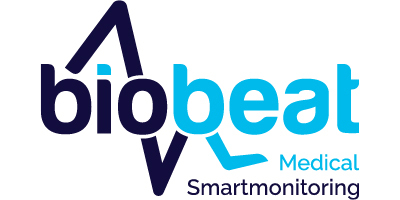
Biobeat’s system includes a wearable monitor which utilizes a PPG-based sensor to continuously provide accurate patient readings of 13 health parameters. Biobeat’s web platform incorporates advanced AI-based algorithms to provide alerts on potential deterioration. Biobeat’s wearable devices are the first devices to be FDA-Cleared for cuffless non-invasive blood pressure measurement.
Tamir Raveh
tamir@bio-beat.com
Efal
https://www.bio-beat.com/
Company's Solutions
The company’s remote patient monitoring (RPM) health-AI platform includes a disposable short-term chest-monitor and a long-term wrist-monitor, both of which utilize a photoplethysmography-based (PPG) sensor to continuously provide accurate patient readings of 13 health parameters, including cuffless blood pressure, pulse rate, respiratory rate, blood oxygen saturation, temperature, stroke volume, cardiac output, one lead ECG (only chest-monitor) and more. Leveraging its automatic, continuous and noninvasive RPM AI platform, Biobeat has generated the biggest vital-sign database in the world, which it utilizes to identify early deterioration of patients via its proprietary big-data and health-AI tools. Aggregated patient health data is viewed by medical staff via Biobeat’s secure HIPAA and GDPR compliant cloud-based patient management platform, which utilizes an automated real-time early warning score (EWS) system that incorporates advanced AI-based algorithms to provide alerts on patient health status and potential deterioration. These capabilities allow Biobeat to support medical teams with tailored patient care such as adjustment of therapeutics and early prevention of specific disease exacerbations.
Prominent Case Study
Most healthcare facilities rely on manual spot-checking methods to monitor patient status. These spot checks only occur every four to eight hours and can increase the risk of infection via increased patient interfacing—a vital consideration during COVID-19. More significantly, infrequent spot-checking leaves patients unmonitored for extended periods of time. This means that staff is making decisions based on data that is often inconsistent and outdated. Providers are using new technologies to provide “hospital at home” care for patients, which ideally can provide patients with the same care at home as they would receive in the hospital. Understanding that they don’t have the capacity to increase volume, infrastructure, staff, and finance to train staff, providers are turning to telehealth as the perfect solution to narrow this gap. Our RPM solutions are beneficial for both our clients- Hospitals, insurance companies, pharma, CROs, Telemedicine providers, payers, and physician offices as well as the patients become more convenient and at the center of care.